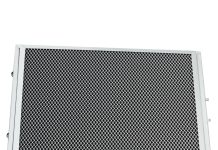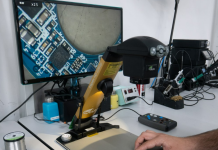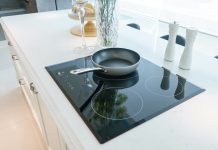Sensor technologies in household appliances are sharing in new practicality levels, with smart devices that respond to human touch, detect vibrations, suit loads and always operate efficiently.
In the era of pervasive Internet, household appliances are evolving towards the direction of an anthropomorphic intelligence. Besides the automatic control depending on the environment where they are called to operate and on the use requirements, they can also be customized according to personal use habits.
This course towards a world of “smart household appliances ” can occur only through the use of sensors. From air conditioners to refrigerators, from washing machines to ovens, from electric boilers to coffee machines (the list is anyway long), sensors are used to digitalize the relevant information and for a strict control of safety and functions.
In many cases, sensors are in the apt condition for working in a harsh environment, like for instance the measurement of humidity and temperature in a dishwasher, issuing a precise electric output signal.
The same problems exist for a temperature sensor called to grant the food cooking, in this case the survival of both the sensor and of the wiring at the high oven temperatures is needed.
A sensor for all requirements
In washing machines and in dryers, the temperature sensor measures the water temperature and checks heating elements. The pressure sensor monitors the water level. The vibration sensor detects the unbalance conditions during the motor rotation. Force sensors measure the payload at the start of the washing cycle.
In the dishwasher, the magnetoresistive sensor checks the rotation of the spray arm and level sensors control the water level and the detergent dispenser level. The proximity sensor assesses the door closing and, if necessary, it locks it before the start.
In the dryer, the wetness sensor monitors the process humidity and stops the machine when the laundry is dry, while the thermopile measures the temperature of clothing to prevent overheating and damages to fabrics.
In a hob the temperature sensor monitors the temperature of the glass surface for the cooking control and to manage indicator lights (hot surface) for the user safety, the temperature sensor checks the pyrolytic cleaning temperature and verifies the door lock.
In small household appliances, temperature sensors measure the temperature of the liquid and of the heating element; the humidity sensor monitors the wetness content in foods during the cooking and the steam production in espresso machines, in steam ironing systems and so on. The thermopile measures the food temperature without the need of establishing a physical contact.
The typical input parameters to sensors are variations of the physical status that, with various steps, are converted into electric signals that can be used by a controller; the detected temperature, for instance, results in an electric heating element of the sensor that in its turn generates a variation of the voltage drop.
The machine programme can need additional parameters that change in time and that, eventually processed by suitable algorithms, extrapolate other parameters or control signals for indicators and actuators.
The dish quantity in a dishwasher, for instance, is determined through the necessary time to enable the water heating; however, this time depends also on other factors, like the cutlery material.
The water turbidity allows determining the present filth level.
The unbalance of a propeller or of a drum is determined by the fluctuation of the motor’s revolution number.
Hall effect sensor
The Hall-effect sensor is a transducing device used to detect and to generate a voltage when a magnetic field is present.
Due to the possibility of having both digital and analogue outputs, Hall-effect devices are wide-ranging and involve a broad use, they can be used as sensors of proximity, positioning, speed and current detection.
The application in household appliances is relatively user-friendly: it is used for instance in dishwashers, to know the rotation of the upper rotating arm. The magnetic field is generated by a permanent magnet in the washing arm. When the arm moves in proximity of the sensor, the output voltage takes a value ranging from 4 to 5 V, otherwise it is 0-1 V.
Irrespective of the measured value, this application is similar to a reed relay one and can be classified as a binary sensor that simply assumes two stages, 1 or 0, just signalling whether or not a predefined state has been reached.
A Hall-effect sensor can be easily introduced into complex projects, also given the small sizes and the simple connection with electronic circuits. This offers significant economic benefits to manufacturers, since they can use a single standard component for various application types. Moreover, Hall effect sensors are galvanically insulated, they can withstand current values exceeding the nominal one and voltage peaks, without being damaged, as well as, unlike an electromechanical component, it is a durable solution since it is not affected by wear problems.

Thermopile sensor
The thermopile is a temperature sensor made up by various thermocouples connected in series and having the respective reference junctions and the measurement junctions placed at the same temperature.
A thermopile formed by n thermocouples features at its ends a potential difference that is n-times higher than the single thermocouple; owing to the increased area associated with the measurement junctions, the temperature detected is actually an average temperature. By means of deposition techniques that are typical of microelectronics, it is possible to implement thermopiles with extremely reduced sizes, called micro-thermopiles, which solve the problem.
Infrared thermopile sensors are designed to measure the temperature from remote, detecting the infrared energy (IR) of an object. The sensitive element consists of small thermocouples positioned on a silicon chip, it absorbs energy and produces a proportional output signal. A reference sensor is inserted into the package as a compensation reference. Infrared thermopile temperature sensors measure the temperature contactless and they are available with various lenses and filters that allow their use in manifold applications.
Thermopiles are based on the Seebeck effect, historically used for conventional thermocouples. The development of micromechanics and of thin film technology has enabled the design and manufacturing of miniaturized low-cost thermopile sensors.

Low pressure sensor
A low-pressure sensor allows a safe and efficient operation of the washing machine, monitoring the water level in its drum.
The pressure sensor is connected to the washing machine drum by a flexible hose that allows it to detect the pressure variations according to the water level reached.
Pressure readings are switched into a digital signal that is sent to the control board and used to adjust the water level during the whole washing cycle. An internal temperature sensor, with compensation function, allows complex functions and reliable results.
The membrane, properly sized, provides accurate measurements and allows reliable readings with even small water quantities. The pressure interval of the sensor ranges on average from 0 to 2/3000 PA, an operational interval that also depends on the membrane’s size.
Dishwashers are another common application for low-pressure sensors. They can in fact be used in any appliance where the precise monitoring of the water level is fundamental, provided that the range and the sizes of the sensor are compatible.

Force sensors
Force sensors are used for the detection of the load unbalance in washing machines and in microwave ovens. The compression load cell can have analogue or digital output signals.
Based on microstrain gauges in MEMS technology, it allows an optimized flexibility for integrated force detection applications generally ranging from few dozens of Newtons to several hundreds. It is fixed to the device to be measured by double-sided tape or glue.
The centric application of the force and a sufficiently stiff contact surface are important. To measure the force, the sensor must be properly positioned to be directly in the force flow and so that the whole force flows through the sensor.
With sensors based on strain gauges, the processing of the mechanical variable in electric signal takes place in three phases. The starting point is a metal sheet on whose surface external loads cause stresses. This deformation is measured by means of strain gauges applied to the surface of the metal sheet, which is deformed by the force application. Strain gauges convert the mechanical strain into a change in electrical resistance and act as mechanical-electrical converters. Through this resistance variation, they generate a voltage variation that is proportional to the force applied. With the aid of the connection of single strain gauges to form a Wheatstone bridge, it is possible to measure even the smallest strains.
The advantage is that the sheet deformation is elastic, so that at the end of the load application the metal sheet relaxes, so returning to its original zero-load state.
Sensors are generally made of high-strength stainless steel, but sensors made of hardened steel aluminium or other metal alloys are available for special applications, too.
Reed relays and reed switches
Reed relays, like electromechanical relays, have physical contacts that are mechanically operated to open/to close a path. However, concerning reed relays, contacts are much smaller and with inferior mass compared to those used in electromechanical relays.
Reed relays are made up by coils wound around the switch consisting of two flexible ferromagnetic sheets partially overlapping and hermetically sealed inside a glass capsule filled with an inert gas. Sheets have contacts on their superimposed extremities. When the coil is energized, the two sheets are brought together so that their contacts complete the electrical path. When the coil is de-energized, sheets return to their rest position separating contacts.

Owing to the small contacts and the different drive mechanism, a reed relay can switch about 10-times faster than an equivalent electromechanical relay.
The drawback is that the smaller contacts make it much more exposed to the damages caused by the arch when the circuit closes, which can melt a small section of the contact surface. If the contacts are still closed when the molten section resolidifies, they might weld together. The force of the sheets is often not sufficient to break mechanically the welding after the driving current is cut off, which makes the relay unusable. This susceptibility to contact damages also concerns inrush currents, which are particularly dangerous and must be controlled by placing an impedance in series.
The small sizes of the reed relay, the high speed and the long duration make it an excellent choice for several switching applications.
Magnetic reed sensors (or reed switches) work on the principle of the previous ones, but they are enveloped in a plastic or metal package (of cylindrical or parallelepiped shape) and impregnated with epoxy resin that assures protection against wetness infiltrations and against collisions and vibrations.

The sensor switches when it meets the magnetic field of a permanent magnet.
Magnets of various shapes and sizes are available for the driving of these sensors.
A typical application example is the detergent level indicator, where a float containing the permanent magnet operates the reed switch; it is also used as a switch for the door opening in refrigeration appliances.



